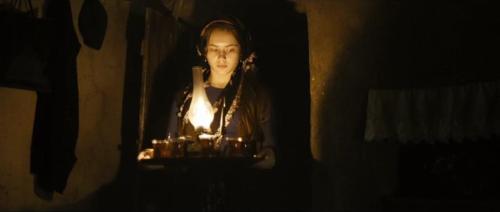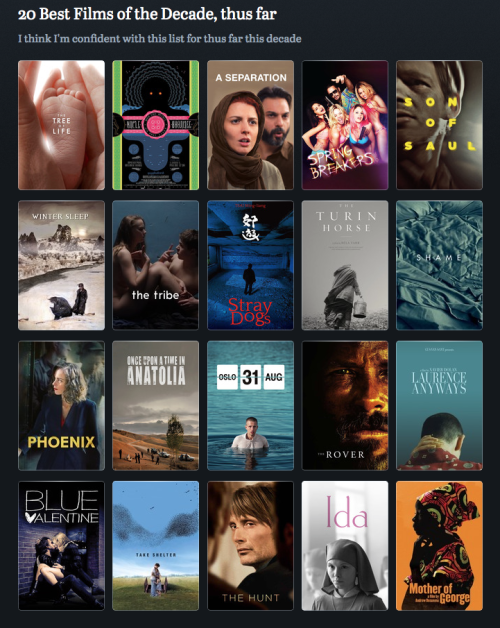#once upon a time in anatolia
“Different people tell the same event differently. Yet one person tells the event much more clearly, with much more meaning. It’s because of his form. The form is what convinces you. Where he puts the silences, whether he looks at you or doesn’t at certain points in the story, this is crucial. Somebody tells you a story in person, even if it is a very unimportant thing, if it is done well, you are very interested. They can make the thing really valuable for you. There is always something like that. The form has the ability to make the content more mysterious, more powerful, more real, more light, to imbue it with more truth. It’s everything really.”
– Nuri Bilge Ceylan
Still from Once Upon a Time in Anatolia (2011, dir. Nuri Bilge Ceylan
Post link

“You’re not human!”
Nuri Bilge Ceylan’s latest film, Once Upon A Time In Anatolia, is nothing if not arduous: a glacially paced, 150 minute police procedural? Certainly not for everyone. But, if you can stick with it, Ceylan’s film is one of genuine depth and complexity – if not for the entirety of its bloated run time.
The film follows a group of bumbling police officers, and two murder suspects, as they search for the missing body of a murder victim in the Turkish countryside.
At its best, Once Upon A Time In Anatolia is a fascinating insight behind the professional curtain of flawed men. They struggle with frustration as their search continues into the night, while Ceylan introduces elements of dark, droll humour (“You look like Clark Gable”) to make the characters more relatable and, importantly, more human. The aforementioned “Clark Gable” scene is the film’s finest moment.
The only real problem is that the film could certainly benefit from a trim – there are a few scenes that could be shorter, particularly the excruciatingly long final act. That this is the only real issue in an otherwise compelling and unusual character study says a lot for the film’s quality, but it’s unfortunately enough to hold it back from the greatness it hints at.
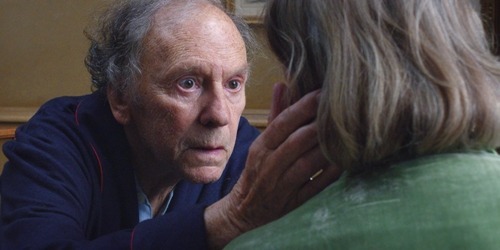
1.Amour (Michael Haneke)
This masterful ode to death and dying is every bit as uncomfortable and unflinching as Michael Haneke’s sombre reputation suggests, but by adding a new found warmth to his repertoire, Amour is a film made remarkable in its simultaneously brutal and tender depiction of humanity.

2. The Master (Paul Thomas Anderson)
Paul Thomas Anderson’s latest opus offers, among other things, an intensive study of men who lead and men looking to be led in post-war America. This cerebral approach to character makes for fascinating cinema, and although its mysteries may ultimately evade, The Master is as breathless a film as one would expect from America’s greatest showman.

3.Tiny Furniture (Lena Dunham)
Building on the already solid foundations of mumblecore with the wit of Woody Allen, Lena Dunham’s painfully frank film about life after graduation is a thoroughly modern and disturbingly relatable examination of alienated youth and wasted talent.

4.Rust and Bone (Jacques Audiard)
Jacques Audiard’s exquisite take on melodrama observes the blossoming relationship between a security guard and a whale trainer in the wake of a career-ending tragedy, but instead of descending into mawkishness, Audiard’s well judged restraint grounds the film in some kind of reality, allowing the central romance to develop in an organic, unsentimental way.

5.The Innkeepers (Ti West)
By combining the twin terrors of ghost stories and existential crises, Ti West has found the perfect home for the thematic concerns of the mumblecore movement with a film that not only functions as A grade horror, but also as a terrifying parable for the modern youth.
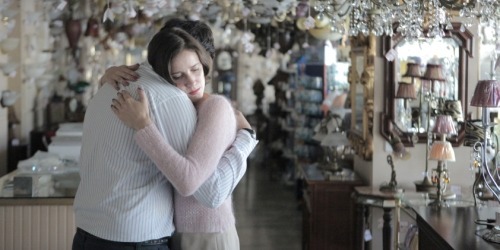
6.Alps (Yorgos Lanthimos)
The Hitchcockian idea of using doppelgangers to help appease grief is an inherently sick one, and Lanthimos’ steady, distant observations of how the frailties of such a process begin to surface are, while elusive, as morbidly fascinating as they are troubling.
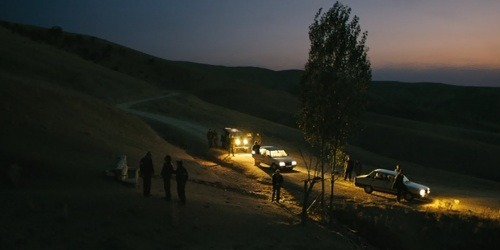
7. Once Upon A Time In Anatolia (Nuri Bilge Ceylan)
With its long, glacial takes, stunning photography and startlingly calm approach to narrative and character, Once Upon A Time In Anatolia offers an unusually lyrical, thematically rich take on the police procedural sub-genre.

8.Laurence Anyways (Xavier Dolan)
The epitome of a hot mess, Xavier Dolan’s vivid dissection of transsexuality, romance and heartbreak is a gorgeously presented, decade spanning emotional epic reminiscent of the work of Pedro Almodovar, and although it lacks control, its bombastic style is more than enough to sustain its ambition.
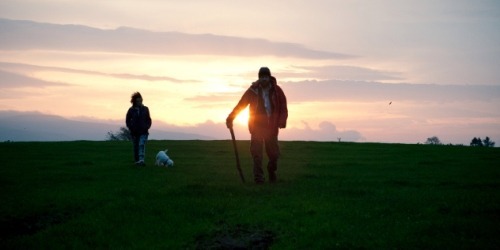
9.Sightseers (Ben Wheatley)
Taking cues from Badlands and the films of Mike Leigh, Ben Wheatley’s third film in as many years is an unabashedly violent, romantic and hilarious romp through the English countryside, blending horror and comedy to wonderful, if wholly British effect.
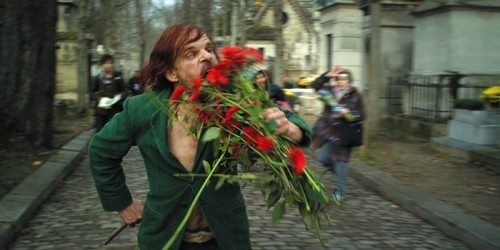
10.Holy Motors (Leos Carax)
Leos Carax’s brazenly opaque oddity almost didn’t make this list, with its absurd, often hideous images serving to baffle rather than engage. But, for better or for worse, Holy Motors has stayed with me more than any other film this year, and that surely has to mean something.
.
NOTE:This list is based on UK release dates.
I made a list for the decade of best films, thus far!
FOLLOW ME ON LETTERBOXD: http://letterboxd.com/BryceHoogland/
Post link

